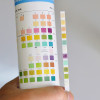
 IJCP Editorial Team
IJCP Editorial Team
Childhood Immunity and Infections: Time to Consider Endothelial Cells and Platelets
COVID-19 pandemic has taught us the crucial role of immunity in children as well as in adults. It has also described a boosted expression of innate immune responses, increased expression of IFN-gamma in the upper airways to fight SARS-CoV-2 infection and an increase of T-regulatory chambers in children that determines the severity of disease expression among other factors.
Although immune mechanisms seem to play a key role, experts are also considering the role of the endothelium. While initially considered to be a respiratory disease, evidence now suggests COVID-19 be a systemic inflammatory condition where the virus may invade nearly all the parts and cause endothelial inflammation. Endothelial phlogosis and activation of the coagulation cascade as determined by lab investigations are the hallmarks of the disease, with thromboembolic events and myocarditis as the consequences.
Adults reported more thromboembolic events during or after COVID-19 than children. These events were rarely found in children during COVID-19, and if developed Multisystem Inflammatory Syndrome (MIS-C) after SARS-CoV-2 infection, high D-Dimers, myocardial dysfunction or coronary involvement, were promptly managed with anti-coagulants or anti-aggregants.
Long COVID observes chronic inappropriate endothelial and platelet activation, lung hypoperfusion and micro clots. Evidence favour the pivotal role of the immune system and endothelial/coagulation pathways in the origin of Long COVID in a subgroup of patients.
Further, myocarditis was also described in some young males as the primary complication of mRNA anti-COVID vaccination, indicating a close relationship with cells interfacing with the blood. These discrepancies in immune responses to vaccinations and infection are developing significantly inconsistent susceptibility to reinfections in people of all age groups.
Various infectious diseases including COVID-19 and Long Covid have indicated a pivotal role of endothelial cells (ECs) and platelets in immune responses, chronic inflammation, and, perhaps, long-term outcomes in infections and other inflammatory diseases.
Considering these together, these observations indicate the active and pivotal role of the endothelium in immunity, responses to infections, and homeostasis of the organisms.
The recent data from COVID-19 and Long COVID showed the importance of anticoagulation and/or anti-aggregation approaches in improving outcomes in severe COVID-19 and improving symptoms in Long COVID patients.
This further mandates focusing on ECs and platelets in infectious conditions and suggests that managing inflammation solely may not fully restore homeostasis in chronic inflammatory processes.
Notably, there have been fewer studies in children investigating the function of ECs and platelets in modulating immune responses, but the current evidence from the adults’ demands undertaking such studies on priority.
Future research must explore the role of platelets and ECs on blood clotting and vascular homeostasis along with investigating their complex involvement in immunity and as targets for future anti-inflammatory therapies.
Buonsenso D. Childhood Immunity and Infections: Time to Consider Endothelial Cells and Platelets. Children. 2022; 9(6):841. https://doi.org/10.3390/children9060841

IJCP Editorial Team
Comprising seasoned professionals and experts from the medical field, the IJCP editorial team is dedicated to delivering timely and accurate content and thriving to provide attention-grabbing information for the readers. What sets them apart are their diverse expertise, spanning academia, research, and clinical practice, and their dedication to upholding the highest standards of quality and integrity. With a wealth of experience and a commitment to excellence, the IJCP editorial team strives to provide valuable perspectives, the latest trends, and in-depth analyses across various medical domains, all in a way that keeps you interested and engaged.












Please login to comment on this article